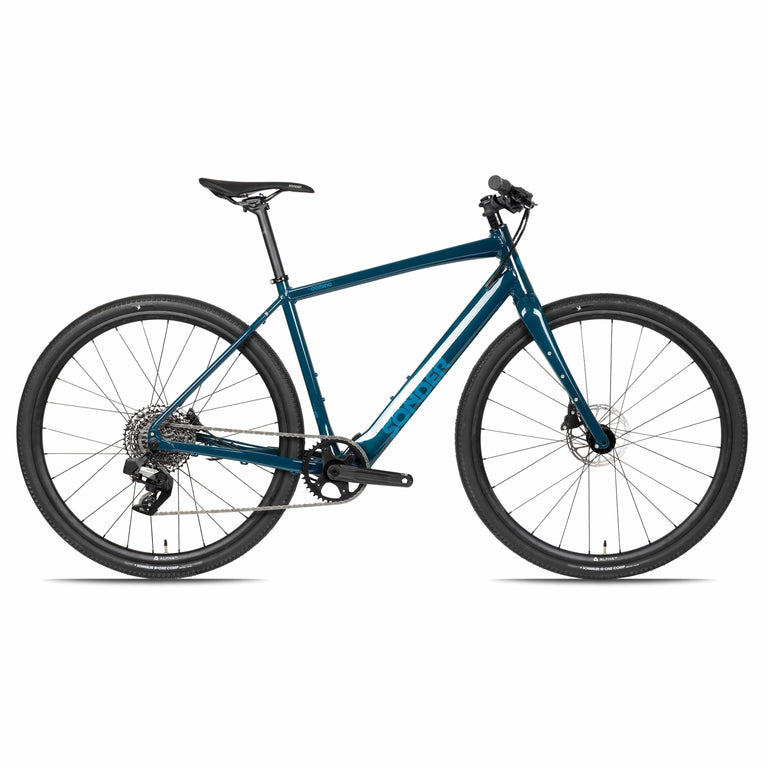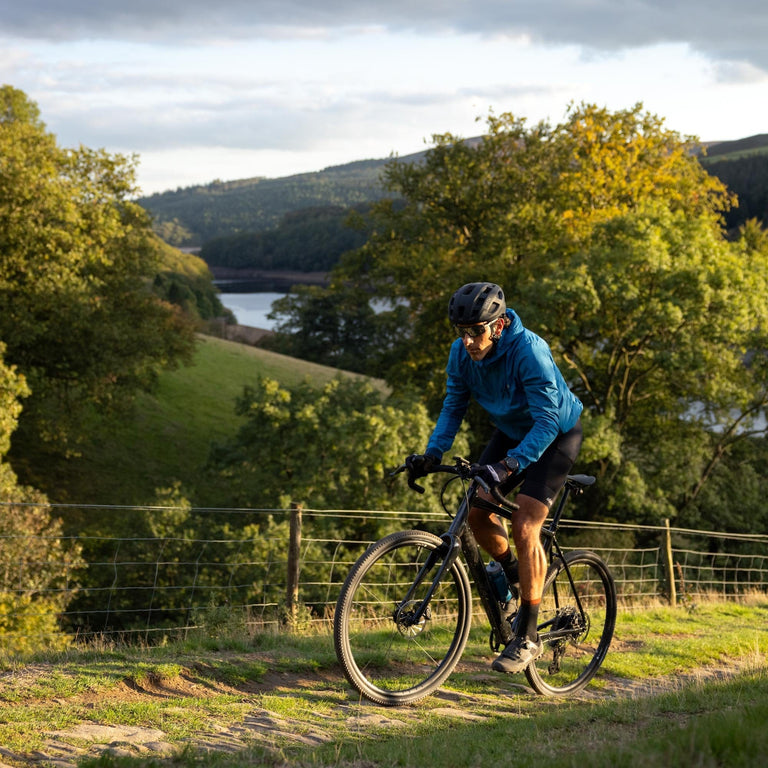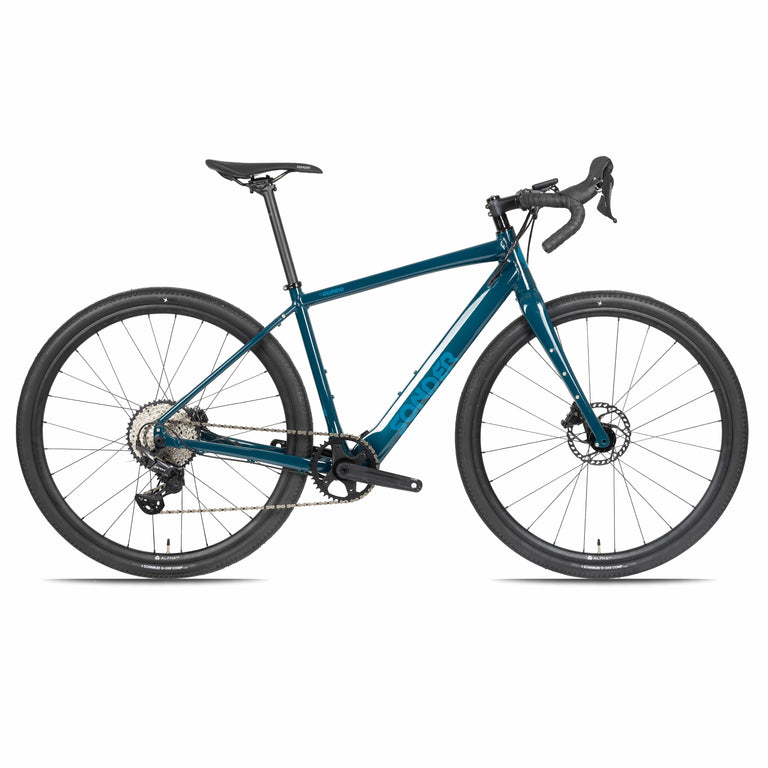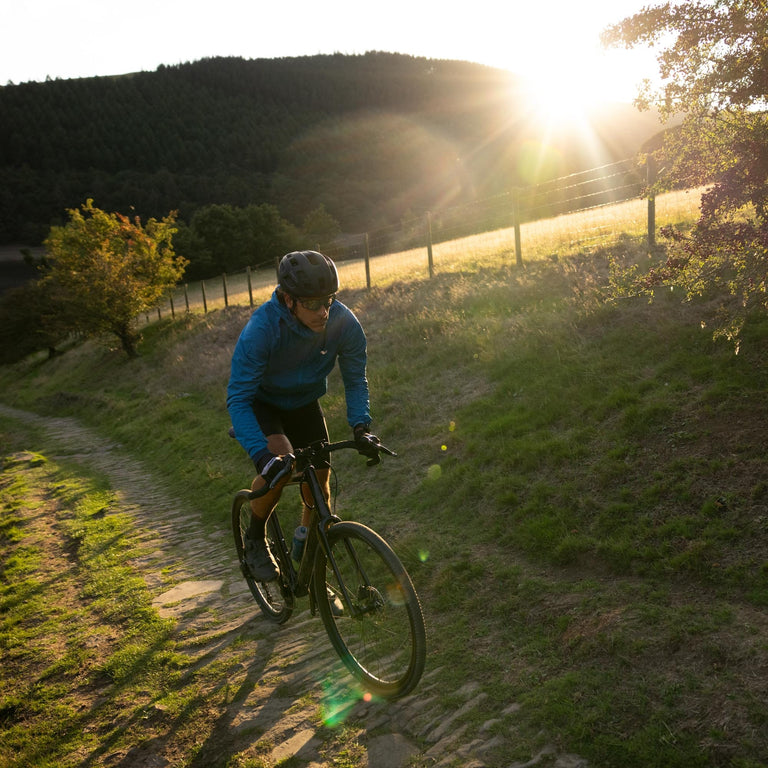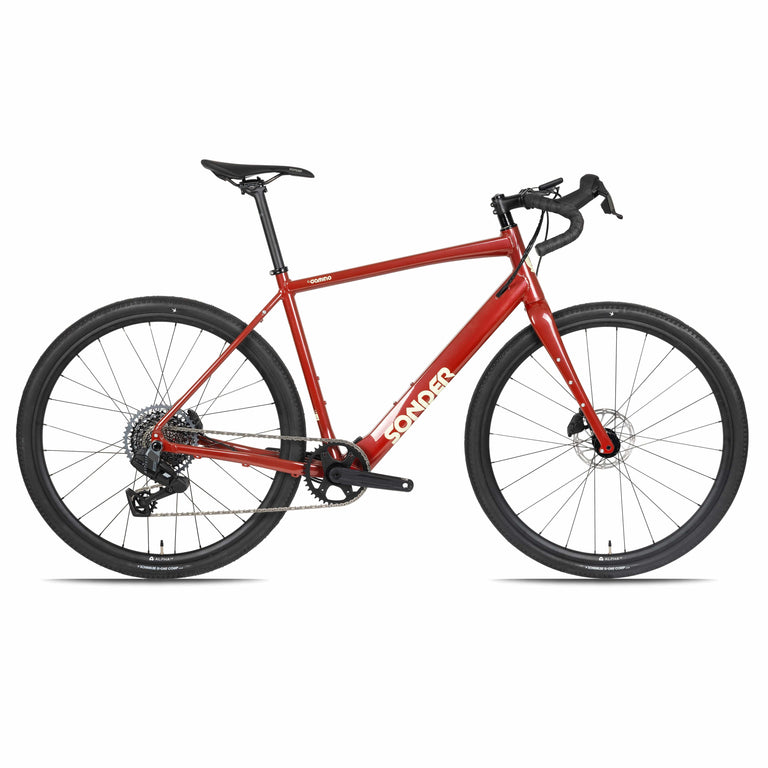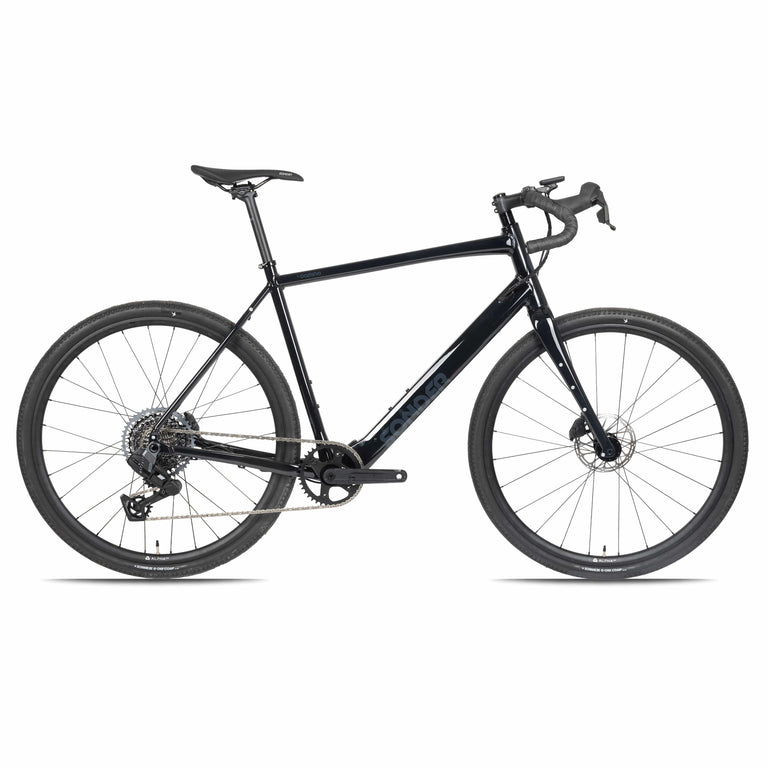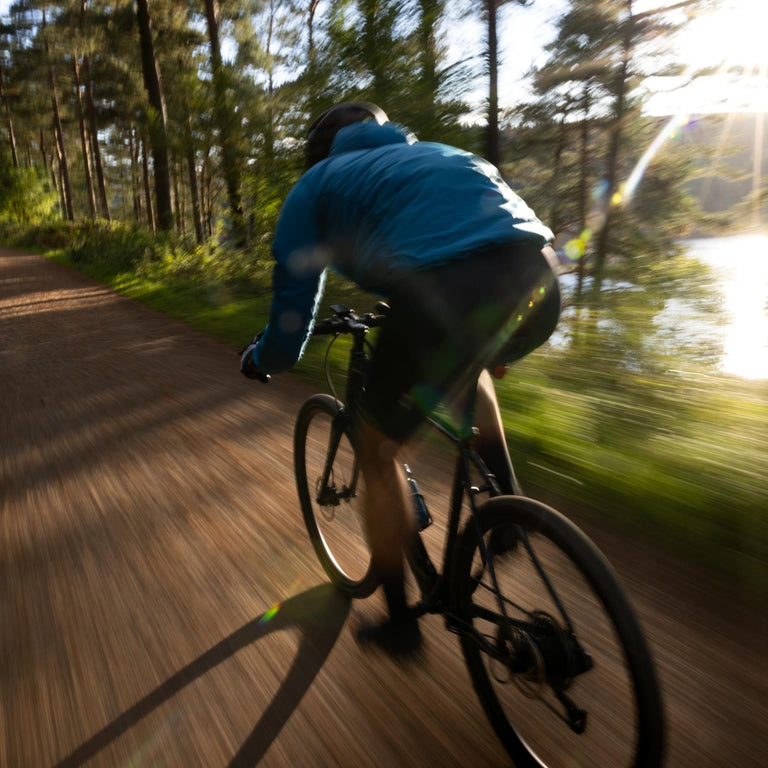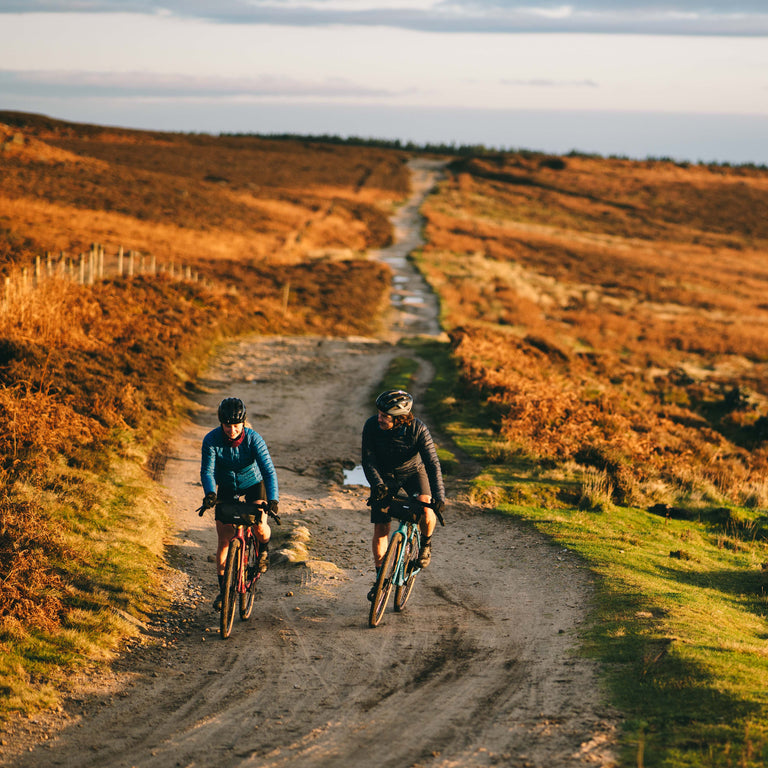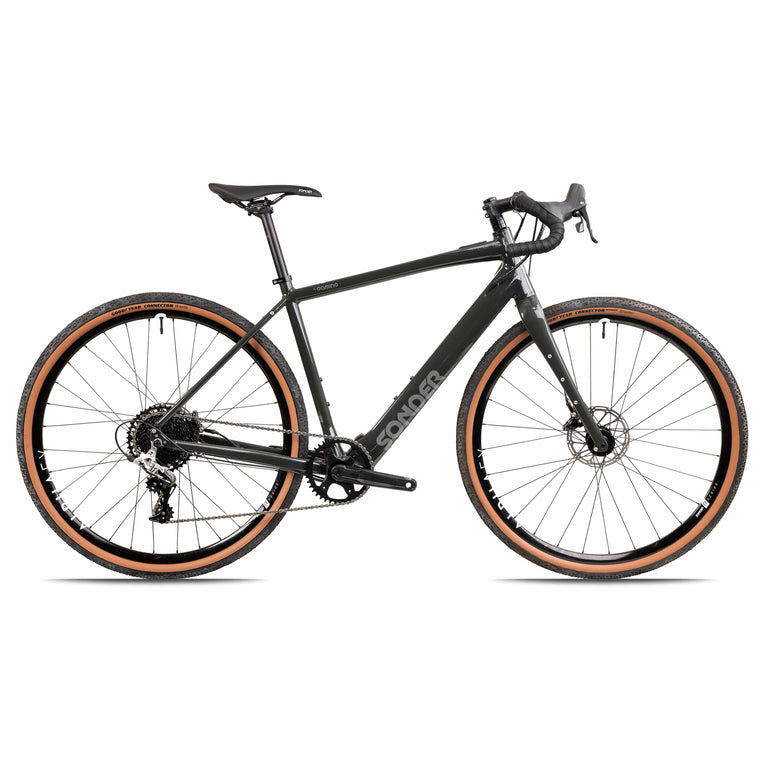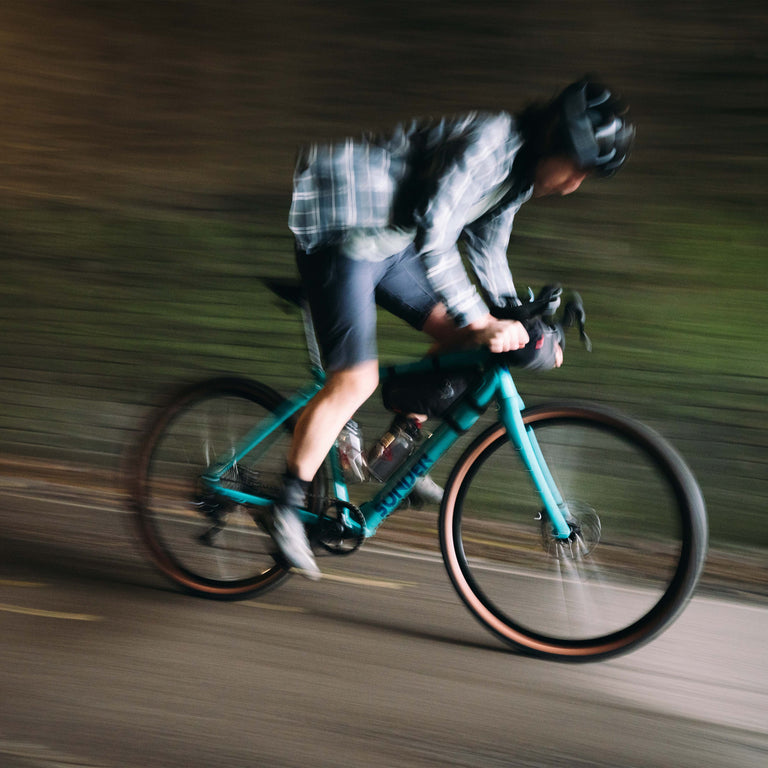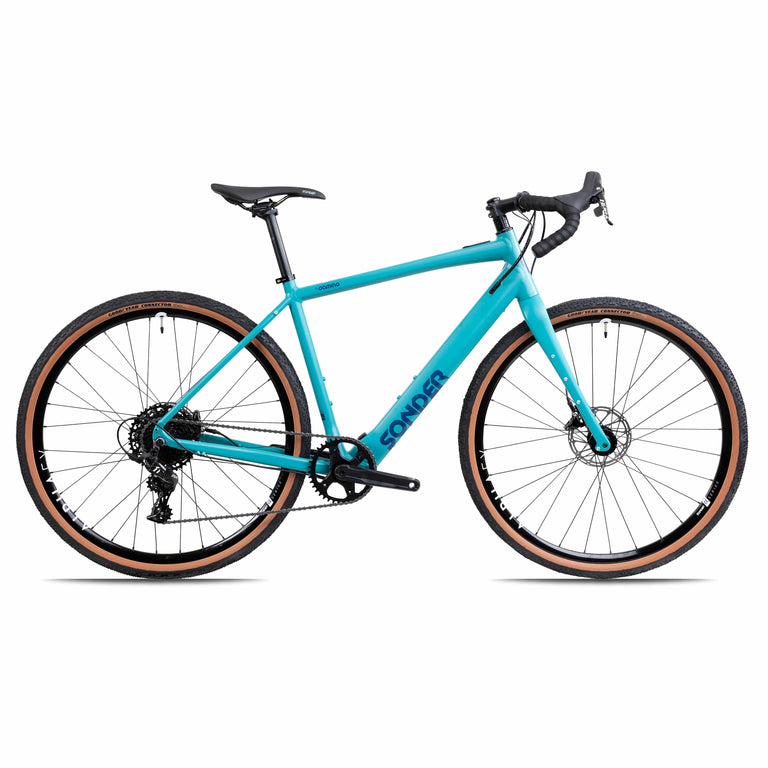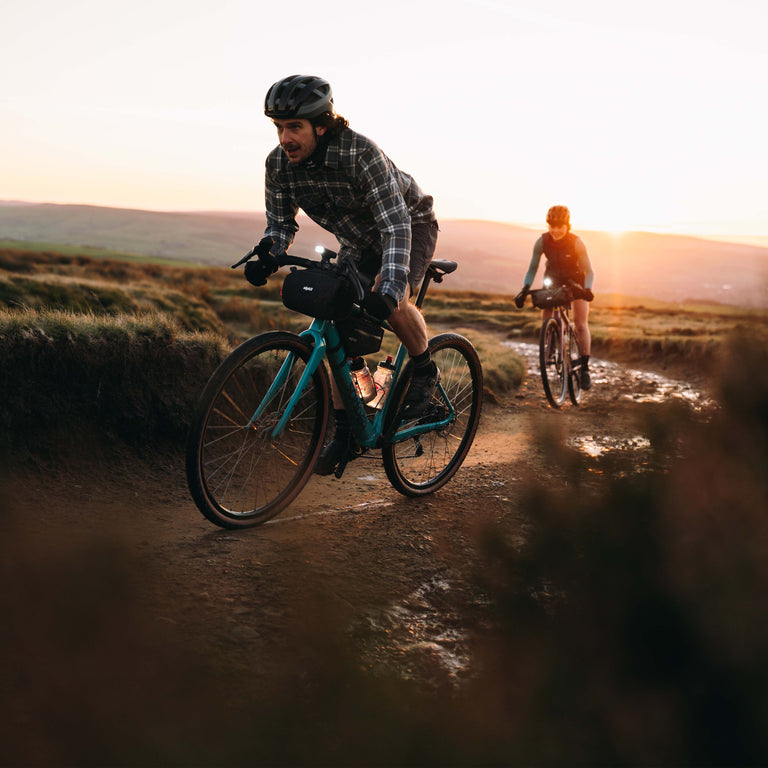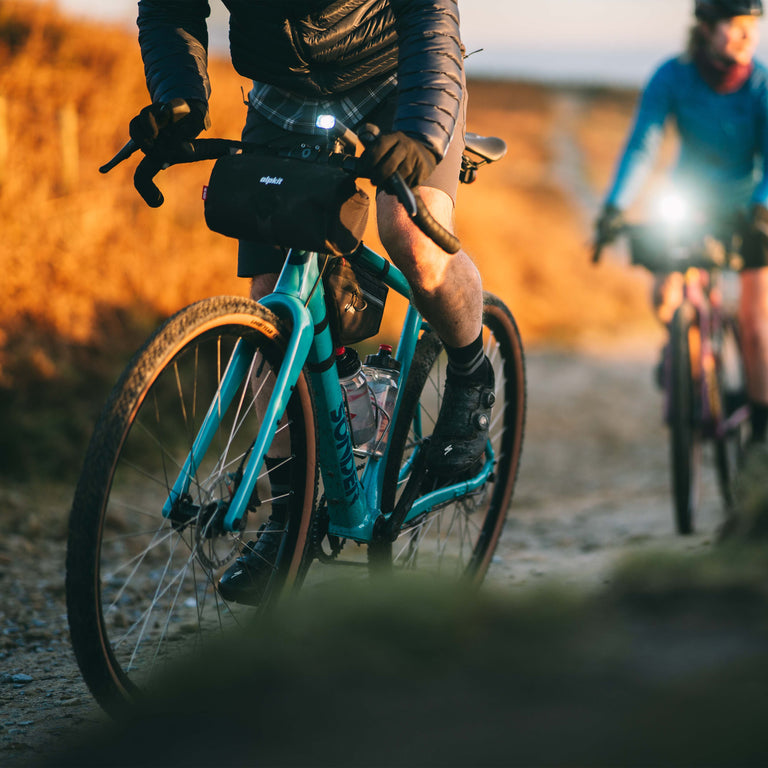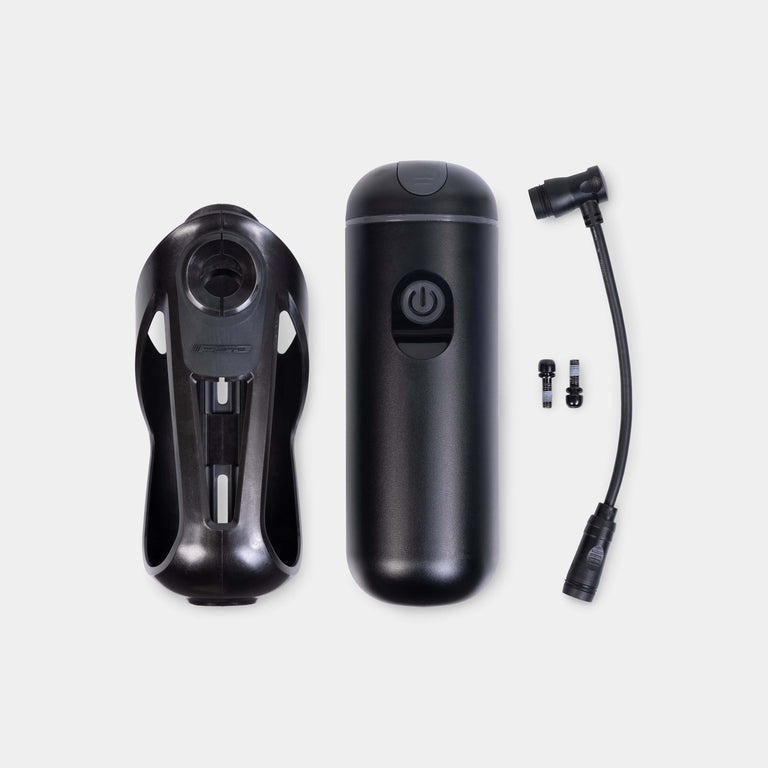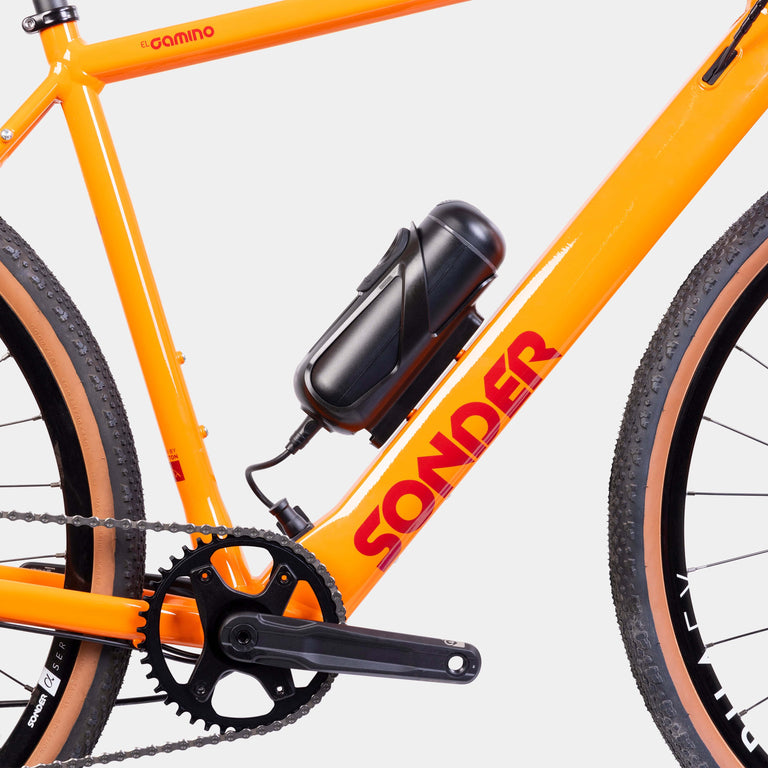
Plan your e-bike tour with confidence. Learn essential range calculations, battery management and route planning tips for multi-day cycling adventures.
Planning a multi-day bike tour is full of the anticipation of discovering new places, riding with friends and cementing experiences that will last a life time.
If your choice of steed is an e-bike, like the El Camino, a little bit of time spent understanding how your choice of power setting effects your potential range is time well spent.
This guide provides the essential calculations that help you plan with confidence, giving you practical tools to optimise your riding experience.
Once we have covered the theory we will dive into a theoretical ride along the West Kernow Way, a five-day, 270km tour around Cornwall's spectacular western peninsula.
As we run through these calculations it is important to remember that the motor is not the only power source - your legs are putting in work as well.

Essential E-Bike calculations
1. Battery capacity: Understanding your fuel tank
Formula: Voltage (V) × Amp-hours (Ah) = Watt-hours (Wh)
This is the fundamental calculation that tells you the total energy capacity of your battery. Think of Wh as your fuel tank size; the bigger the number, the more energy you have available.
El Camino example:
- Main battery: 36V × 6.9Ah = 250Wh
- Range extender: ~180Wh additional
- Combined capacity: 430Wh total
All other calculations reference this number. If someone tells you they got 80km range, that's meaningless without knowing their battery capacity. An 80km range from 500Wh is very different from 80km from 250Wh.
A common mistake is to confuse watts (W) with watt-hours (Wh). Watts measure power (the rate of energy use), while watt-hours measure total energy capacity. The El Camino motor is rated at 250W (power output), but its battery is rated at 250Wh (energy storage).
2. Average power consumption: How efficient are you riding?
Formula: Battery capacity (Wh) ÷ Distance traveled (km) = Wh/km
This number reveals how efficiently you're using battery power. It's your personal miles-per-gallon equivalent. Track this metric over multiple rides and you'll see your efficiency improve as technique develops.
El Camino examples:
- Efficient riding (low power, good technique): 250Wh ÷ 70km = 3.6 Wh/km
- Intensive riding (high power, technical terrain): 250Wh ÷ 20km = 12.5 Wh/km
- Typical recreational e-bike riding: 8-15 Wh/km
This becomes your planning baseline. Once you know your typical consumption on familiar terrain, you can predict range for any route. Riding mostly in low power on mixed gravel? Expect around 3.5-4.5 Wh/km. Planning technical riding in high power? Budget 10-13 Wh/km.
After 10-20 rides, calculate your average Wh/km for different riding styles and terrain types. This personal data is valuable because it reflects your actual riding behaviour.
3. Estimated range from current battery level
Formula: Remaining Wh ÷ Your typical Wh/km = Estimated km remaining
This is your real-time decision-making tool during rides. Glance at battery percentage, do quick mental math, know immediately whether you can extend the ride, find a friendly coffee shop or head for home.
Example calculation:
- Battery shows 40% remaining = 100Wh (from 250Wh capacity)
- Your typical consumption is 4 Wh/km
- Estimated range: 100Wh ÷ 4 Wh/km = 25km remaining
When you're 30km from home with 45% battery, you know instantly whether to conserve or ride normally. When planning a detour, you can calculate whether you have sufficient charge.
Your typical Wh/km assumes similar conditions to where you established your baseline. Expect higher consumption if: adding significant climbing, riding into headwinds, using higher power modes, or riding softer surfaces.
4. Total system weight
Formula: Bike weight + Rider weight + Gear weight = Total system weight
Every kilogram you move requires energy. Heavier systems use more battery power, particularly when climbing or accelerating.
Example:
- El Camino: 13kg
- Rider: 70kg
- Total: 83kg
Adding 10kg of gear to a 83kg system (bike + rider) increases total weight by about 11%. Battery consumption increases roughly proportionally, particularly on hilly terrain. This explains why loaded bikepacking requires more battery than day riding.
When preparing for a tour, be ruthless about gear weight. Every kilogram saved is genuine range extension. The difference between 6kg and 10kg of camping gear might add 5-8km to your daily range capability.
5. Energy costs of climbing
Formula: (Total weight in kg × Height gain in metres × 9.81) ÷ 3600 = Wh minimum
This calculates the theoretical minimum energy required to lift your total system weight against gravity.
Example:
- System weight: 90kg (13kg bike + 70kg rider + 7kg gear)
- Climb: 500m elevation gain
- Calculation: (90 × 500 × 9.81) ÷ 3600 = 122.6 Wh theoretical minimum
Important: This 122.6 Wh is the total energy required regardless of how you climb. Accounting for motor and human efficiency losses (bodies are roughly 20-25% efficient, motors 75-85% efficient), the actual total energy expenditure is approximately 155-165 Wh.
Critically this energy comes from TWO sources; your legs and the battery. Power mode determines the split between them.
The Role of Torque:
The El Camino's 38Nm of torque determines how effectively the motor can deliver power at low speeds. High torque means the motor can provide strong assistance even on steep climbs where wheel speed is slow. Lower-torque motors become inefficient when operating at very low speeds.
In practical terms: 38Nm means you can maintain 8-10 km/h on steep sections in high power mode, or 6-7 km/h in low power mode, rather than being forced to walk. The torque enables the motor to deliver useful power at climbing speeds, but it's the actual power output (watts) that drains the battery.
Important Caveats:
We have made some assumptions here. These are estimates based on typical motor behaviour. Your actual consumption varies with:
- Climbing speed (faster generally means higher power output)
- Surface quality (loose surfaces require more power)
- Temperature (cold batteries deliver less efficiently)
- How much you personally contribute (fitter riders may use less battery in all modes)
Use this for planning, not precise prediction. After 5-10 rides tracking battery percentage drops on familiar climbs, you'll develop personal data that's more accurate than any formula.
6. Range Extender Maths
Formula: (Main battery + Extender) ÷ Typical Wh/km = Total range potential
Understanding combined capacity helps plan multi-day tours and ambitious single-day rides.
El Camino with extender:
- Main battery: 250Wh
- Range extender: 180Wh
- Combined: 430Wh
- At 3.6 Wh/km: 430 ÷ 3.6 = 119km potential range
- Extender adds: 72% more capacity for 71% more range
The range extender isn't just for emergencies. It's a strategic tool for specific rides where standard capacity would force either excessive conservation or impossible range. Knowing you have 430Wh total changes what routes become feasible.
The extender fits in a bottle cage and charges separately in 3 hours. On multi-day tours, you can charge it in cafés while riding with main battery, or charge both overnight. This flexibility is more valuable than the raw capacity increase.
7. Estimating charging time
Formula: Battery capacity (Wh) ÷ (Charger voltage × Charger current) = Hours to full charge
Understanding charging time helps plan overnight stops and cafe breaks on tours.
El Camino calculation:
- Battery: 250Wh (36V)
- Typical charger: 2A output
- Calculation: 250 ÷ (36 × 2) = 250 ÷ 72 = 3.47 hours
Knowing you need approximately 3.5 hours for full charge helps plan daily schedules. That lunch stop becomes a cheeky charging opportunity. That accommodation needs to provide sufficient evening time for complete recharge before tomorrow's stage.
Most lithium batteries charge to 80% capacity more quickly (typically 2-3 hours), then slow significantly for the final 20%. If you're pressed for time, accept 80% charge and get riding rather than waiting for 100%.
8. Cost per charge
Formula: Battery capacity (kWh) × Electricity cost per kWh = Cost per charge
Ebike operation is remarkably economical. Understanding the costs demonstrates one of e-biking's practical advantages.
El Camino example:
- Battery: 0.25kWh (250Wh converted to kilowatt-hours)
- UK electricity average: ~£0.25 per kWh
- Cost per charge: 0.25 × £0.25 = £0.0625 (about 6p)
- Per kilometre: 6p ÷ 70km = 0.09p per kilometer
Adventure riding is really quite economical compared to any motorised alternative. A week-long tour covering 300km costs approximately 26p in electricity.
Case Study: West Kernow Way long-range e-gravel touring in practice
Lets put this knowledge to use and plan riding the West Kernow Way on an ebike. This 270km route around Cornwall's western peninsula will test battery management, tour planning, and multi-day efficiency skills across five stages of varied terrain.
Route Overview
Total distance: 270km
Total climbing: 3,260m
Format: Figure-of-eight loop starting/ending in Penzance
Terrain: Coastal clifftop tracks, moorland bridleways, mining trails, quiet lanes
Duration: Typically 5 days, though strong riders complete in 3-4 days
The route visits Land's End, Lizard Point, and the historic mining heartland of Redruth, linking together spectacular coastal scenery, ancient monuments, and challenging technical sections. It's ideal for demonstrating e-gravel capability because the terrain varies dramatically, smooth sections where efficiency comes naturally, technical climbs where power is essential, and exposure to coastal winds that beast your battery.
Power management strategy
Use primarily low power, deploy mid power on steeper sections, reserve high power for genuinely steep or technical pitches. Aim to arrive at each overnight stop with 15-20% battery remaining—enough margin for unexpected detours or longer stages than planned.
Range extender or no range extender? Optional for most riders. The main battery provides sufficient capacity if you ride efficiently. However, bringing the extender gives confidence for less experienced riders or allows more generous power use each day.
Plan for 3.5-5.5 Wh/km average depending on terrain and elevation. Coastal stages with significant exposure may consume toward the higher end. Sheltered inland sections allow more efficient riding.
Stage One: Penzance to St Just
Distance: 44km
Climbing: 570m
Time: 3 hours 24 minutes (Komoot estimate)
This opening stage follows predominantly coastal paths with English Channel views. The terrain isn't technically difficult, but clifftop exposure often means wind becomes a factor. It's a gentle warm-up by distance standards, though the exposure and unfamiliar bike handling with full touring kit requires attention.
Power management: Start conservatively. Fresh legs mean low power suffices for most terrain. Budget approximately 140-160Wh for this stage (about 3.2-3.6 Wh/km). This leaves comfortable margin in the 250Wh battery.
Practicalities: First day with loaded bike teaches you how additional gear weight affects handling and power consumption. If you arrive at St Just slightly ahead on battery percentage note you have overestimated consumption and recalibrate for subsequent days.
Lessons: Coastal wind matters more than anticipated. Sections you planned to ride unpowered may require low assist due to headwind resistance. Accept this and adjust rather than suffering unnecessarily, tomorrow's conditions may favour you.
Stage Two: St Just to Porthleven
Distance: 49.5km
Climbing: 610m
Time: 3 hours 58 minutes (Komoot estimate)
After rejoining the northern coastline via brilliant clifftop byways and bridleways, this stage cuts inland to reach the south coast at Porthleven. More varied terrain than Stage One, with the inland sections offering shelter from coastal winds but presenting different challenges through moorland and rural tracks.
Power management: Armed with Stage One experience, you now understand the loaded bike's behaviour. Plan for 160-180Wh consumption (approximately 3.2-3.6 Wh/km). The additional climbing over Stage One is modest, so similar efficiency should be achievable.
Practicalities: The clifftop sections early in this stage are spectacular but exposed. If wind is unfavourable, buffering you all over the place so you use mid power freely here. The inland sections later provide opportunity for more efficient riding where you can recover battery percentage through careful technique.
Lessons: The transition from coastal to inland riding often means significant microclimate change. What started as headwind on the coast may become crosswind or neutral wind inland. Adapt power mode accordingly rather than maintaining same settings by habit.
Stage Three: Porthleven to Coverack
Distance: 51.9km
Climbing: 530m
Time: 3 hours 40 minutes (Komoot estimate)
The Lizard Peninsula stage, potentially the most beautiful riding of the entire route. After a brutal tarmac ramp out of Porthleven (where mid or high power is entirely justified), the route settles into spectacular clifftop bridleways with expansive ocean views.
Power management: This stage has the smallest amount of climbing suggesting reduced battery demands. However, Lizard Peninsula is exposed meaning wind can dominate the energy equation more than gradient. Plan for 150-170Wh consumption if conditions are favourable, but accept 180-200Wh if battling headwinds.
Practicalities: Clifftop bridleways require constant attention to line choice and momentum management. The terrain isn't difficult, but it's not smooth either. Battery-efficient riding means reading the trail ahead and maintaining flow rather than constantly braking and reaccelerating.
Lessons: By end of Stage Three, you're more than halfway through the route by distance and have genuinely mastered the bike's battery characteristics under touring conditions. Confidence replaces anxiety about range management.
Stage Four: Coverack to Portreath
Distance: 54.4km
Climbing: 830m
Time: 4 hours 10 minutes (Komoot estimate)
The test. Highest climbing of the entire route. Are you going to be wearing the polkadot jersey or swept up by the broom wagon? Heading inland across mining country, the abandoned mining trails are technically challenging. Loose rock, steep pitches, sudden gradient changes. This is where technique matters most and where accepting battery expenditure makes sense.
Power management: Plan for 180-220Wh consumption (3.3-4.0 Wh/km). The technical terrain and significant climbing justify higher consumption. This is potentially a day for the range extender if you brought it; not because you must use it, but because having the capacity allows you to have more fun riding the technical sections rather than conserving battery to the point of suffering.
Practicalities: If you've been riding very efficiently through Stages 1-3, you might attempt this stage on main battery alone. If you've been using power more generously or faced unfavourable conditions, the extender provides confidence and allows full enjoyment of the challenging terrain rather than anxiety about reaching Portreath.
Lessons: This historic landscape deserves to be ridden, not walked. Using appropriate power to maintain momentum through technical sections means more riding, less pushing, and ultimately more enjoyment despite higher battery consumption.
Stage Five: Portreath to Penzance
Distance: 59.3km
Climbing: 560m
Time: 4 hours 13 minutes (Komoot estimate)
The final push, and the longest stage by distance. Following the coast-to-coast cycle route initially before heading south to complete the loop. If weather has been kind and you've ridden efficiently, this stage should feel celebratory rather than desperate.
Power management: Fresh battery, tired legs. This is exactly the scenario where electric assistance justifies itself. You can maintain good pace despite multi-day fatigue. Plan for 160-190Wh consumption (2.7-3.2 Wh/km on this longer stage).
Practicalities: Knowing this is the final stage often produces more generous power use. That's fine, you're here to enjoy the riding, not prove minimalist battery consumption. If you've managed the previous four stages well, you have margin to use mid power more freely today.
Lessons: You have returned to Penzance, arriving with more battery remaining than expected. The combination of relatively gentle final stage and accumulated experience means you finish feeling you could have ridden harder or tackled additional distance.
What have we learned from our virtual West Kernow Way?
First of all it is a route we just have to ride. It sounds absolutely amazing!
Multi-day touring teaches efficiency faster than any single ride. Each day builds on previous lessons.
Loaded bike consumption runs approximately 12-18% higher than unloaded. If your practice rides suggested 3.5 Wh/km consumption, expect 4.0-4.2 Wh/km when carrying full touring kit.
Weather matters more than terrain for battery consumption. You can't control weather, but you can adapt expectations and power mode accordingly.
The range extender provides confidence, not necessity. Consider it optional equipment that significantly improves enjoyment.
Physical fitness matters as much as battery management. The most efficient battery technique doesn't help if you're too exhausted to maintain good riding form.
Conclusion
This was a bit of fun. These calculations aren't about obsessing over numbers, they're about building confidence for ambitious adventures. Once you understand your power budget and can predict consumption with reasonable accuracy, range anxiety disappears. You stop worrying about battery percentage and start focusing on riding well.
Whether you're planning the West Kernow Way, another multi-day tour, or simply want to extend your day ride capabilities, these calculations provide the foundation for confident planning. Combined with the riding techniques from our main article, you have everything needed to maximise your El Camino's potential.
Now get out there and start calculating your next adventure.
Related Resources:
- The Long and Short of E-Bikes - Core article on riding styles and techniques
- West Kernow Way Official Route - Our example was inspired by the ever active Katherine Moore. Download her GPX files and let us know how you get on.
Environmental Factors
Both riding styles face the same environmental challenges—temperature, wind, and surface conditions—but adapt differently.
Temperature
Lithium batteries perform optimally between 15-25°C. British riding often happens outside this range. Below 10°C, expect range reduction of 15-25% compared to summer performance. The battery feels less responsive initially until riding warms it up.
Long Game adaptation: Add 10-15km contingency to winter tour stages. Store the bike indoors overnight when possible.
Short Game adaptation: Accept reduced range, plan shorter loops, focus on intensity over distance.
Wind
Strong headwinds significantly increase battery consumption—a 20km/h headwind can reduce range by 30-40% compared to calm conditions. This isn't a flaw; it's physics. Wind resistance increases with the square of speed, and fighting headwind requires substantially more power.
Long Game adaptation: Check prevailing winds during route planning. Out-and-back routes should put headwinds on the return when you can use more assist without range anxiety. Reduce target speed in serious headwinds—sometimes accepting 15km/h is more efficient than fighting for 22km/h.
Short Game adaptation: Use the battery freely in headwinds—it's what you saved it for. Headwind sections become challenging efforts rather than demoralizing slogs.
Surface Conditions
Dry hardpack is most efficient. Damp, tacky surfaces reduce efficiency by approximately 10-15%. Wet, muddy, soft surfaces can reduce range by 30% or more compared to dry conditions.
Long Game adaptation: Plan for reduced range on soft days. Better to finish with 20% battery having used power appropriately than arrive exhausted at 5% battery having tried to conserve.
Short Game adaptation: Soft conditions become part of the challenge. Accept you'll cover less distance, enjoy the battle with terrain.
Sonder El Camino
El Camino Apex1 Flat Bar - Gen 2
- SRAM SX Eagle Trigger 12-speed groupset
- Kynamic E-Drive System
- Sonder Alpha I25 Gravel UK Made wheelset
El Camino Apex AXS XPLR - Gen 2
- SRAM Apex AXS 12-speed groupset
- Kynamic E-Drive System
- Sonder Alpha I25 Gravel UK Made wheelset
El Camino GRX1 - Gen 2
- Shimano GRX 610 12-speed groupset
- Kynamic E-Drive System
- Sonder Alpha I25 Gravel UK Made wheelset
El Camino Rival AXS XPLR - Gen 2
- SRAM Rival E1 13-speed groupset
- Kynamic E-Drive System
- Sonder Alpha I25 Gravel UK Made wheelset
El Camino Force AXS XPLR - Gen 2
- SRAM Force E1 Hydraulic
- Kynamic E-Drive System
- Sonder Alpha I25 Gravel UK Made wheelset
El Camino Apex1 Flat Bar - Gen 1
- SRAM Apex 1 Flat Bar 11-speed groupset
- Kynamic E-Drive System
- Sonder Alpha EX 700c UK Made wheelset
El Camino Apex1 Hydraulic - Gen 1
- SRAM Apex1 11-speed groupset
- Kynamic E-Drive System
- Sonder Alpha EX 700c UK Made wheelset
El Camino Rival1 Hydraulic - Gen 1
- SRAM Rival 1 11-speed groupset
- Kynamic E-Drive System
- Sonder Alpha EX 700c UK Made wheelset
El Camino GRX1 - Gen 1
- Shimano GRX 600 11-speed groupset
- Kynamic E-Drive System
- Sonder Alpha EX 700c UK Made wheelset

